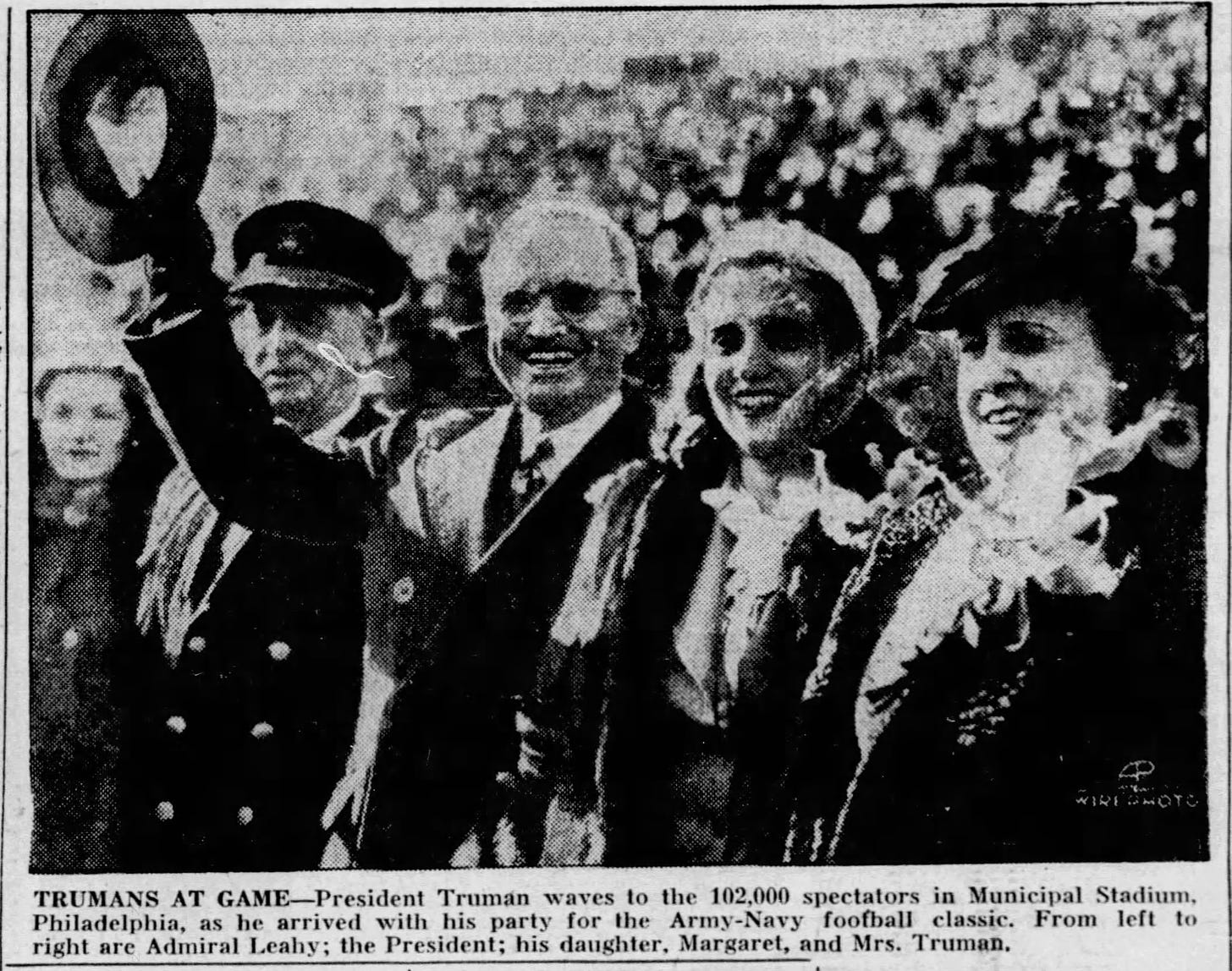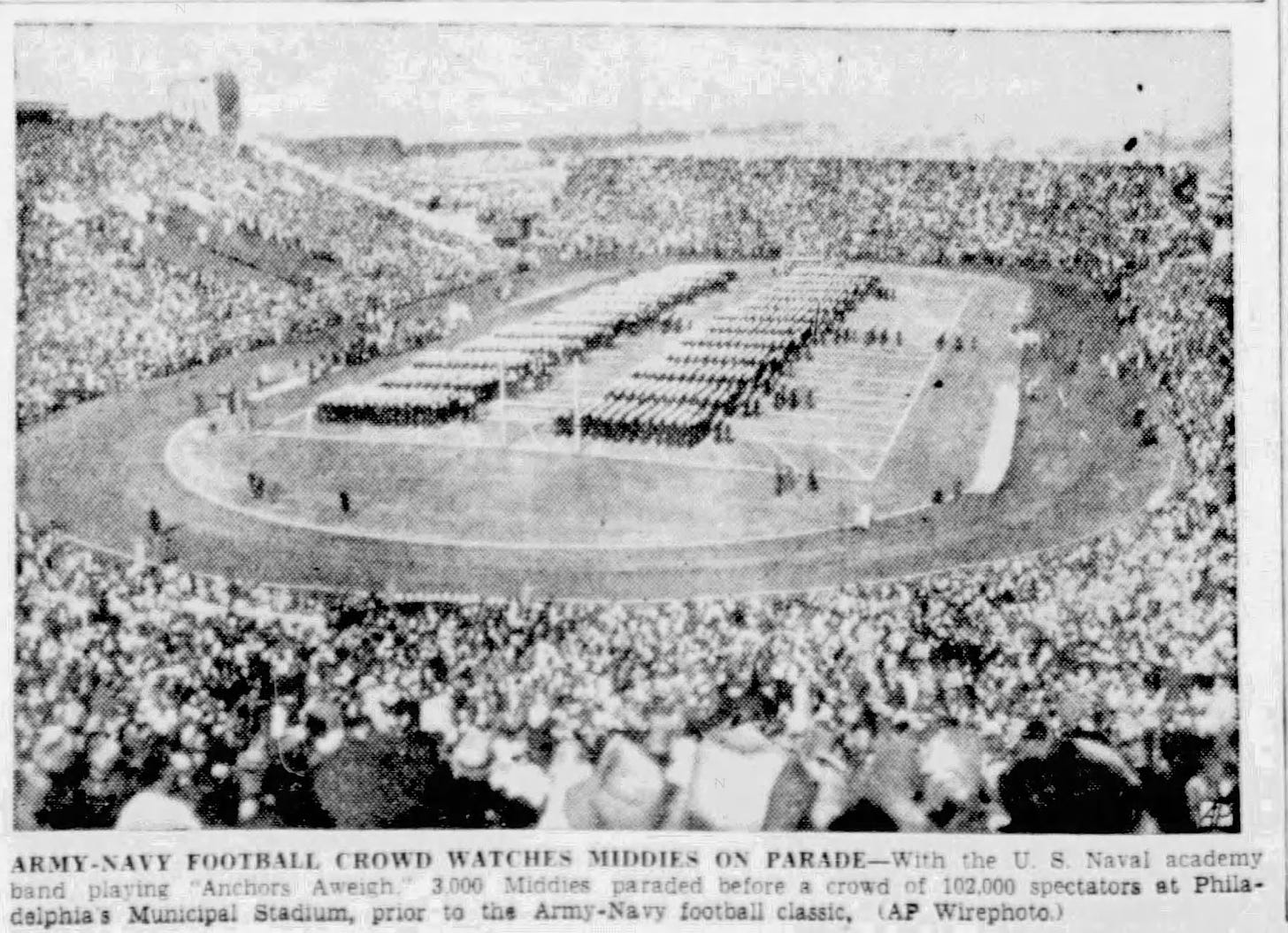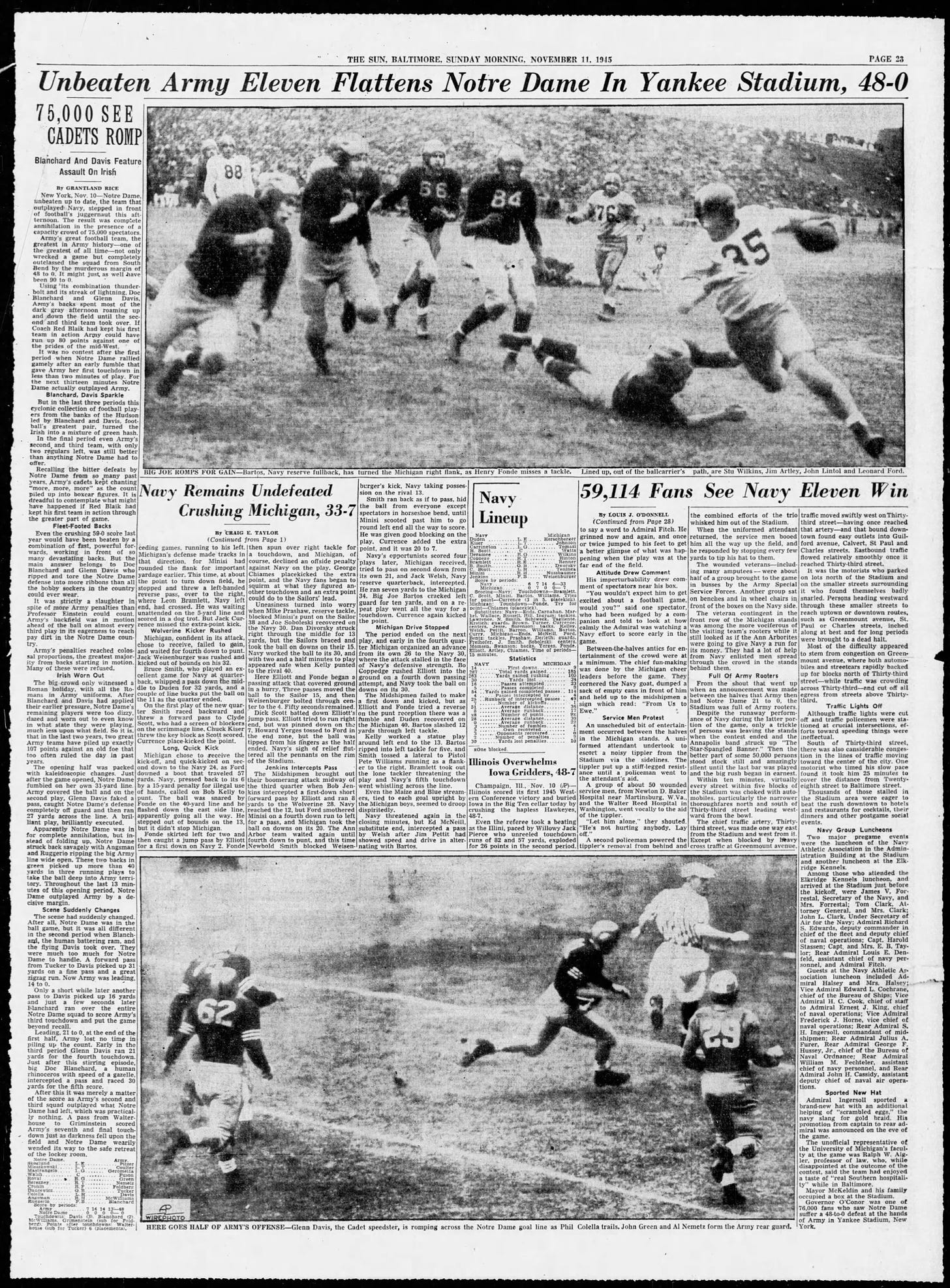Party Like It's 1945: An Army-Navy Game for the History Books? It's Possible
Army and Navy are off to their best coinciding starts since the World War II years. Is it leading to a historic moment in 2024?
Without the aid of Google, Siri or any other search function, can you name the program with the longest winning streak in the Football Bowl Subdivision?
As of Week 6, that honor belongs to Army West Point. The Black Knights shared this distinction with Missouri ahead of Saturday’s slate, but a blowout Tigers loss at Texas A&M wrapped right around the same time Army finalized a 49-7 beatdown of American Athletic Conference counterpart Tulsa.
Perhaps as impressive as the Cadets reeling off nine straight dating back to November of last season has been how they’ve won games in 2024. Saturdays’ 42-point margin was Army’s most lopsided of the season, but no opponent has played the Black Knights to within 23 points through a 5-0 start.
Army’s dismantling of all comers thus far stands in stark contrast to the first half of its winning streak, which began in unlikely fashion. The Cadets were coming off a 21-14 setback on Oct. 28 to lowly UMass, the third loss and nadir of a three-game skid.
The two touchdowns scored against the Minutemen were Army’s first points in three weeks after shutout losses to Troy and LSU.
The degree to which Army struggled just before embarking on this winning streak makes its run all the more remarkable. So does the first win. Facing rival Air Force, ranked No. 17 AP Poll for its best positioning since the Fisher DeBerry era and No. 25 in the initial College Football Playoff standings of the season, the Black Knights were defensively dominant.
The 23-3 win knocked an Air Force team that was the Group of Five’s New Year’s Six bowl front-runner heading into the Commander-in-Chief’s Trophy matchup from its perch. Ironically enough, it was the most lopsided win of Army’s closing stretch.
The 2023 Cadets closed out with wins over Holy Cross by three points, Coastal Carolina by seven, and rival Navy by six.
Coincidentally, last December’s annual showcase against Army was the last time that Navy lost. The Midshipmen moved to 5-0 in 2024 with a 34-7 road blowout of Air Force in the opening leg of this year’s Commander-in-Chief’s Trophy series.
Navy’s offense is putting up 43.6 points per game, including the season-high 56 it dumped on preseason Group of Five automatic Playoff-qualifying favorite Memphis in Week 4.
It’s much too early to suggest Navy’s win over Memphis in the context of the Mids’ overall 5-0 start make the Academy front-runners to earn that Playoff bid. The same applies to Army and its nation-leading winning streak.
Nevertheless, how remarkable is it to consider that with the two service academies both 5-0 for the first time since 1945, it’s not impossible for this year’s Army-Navy Game to determine the Group of Five’s place in the Playoff?
There’s a lot to unpack with this scenario beyond it being a throwback to long-ago era of college football. When Army and Navy clashed in Philadelphia in 1945, Army was pursuing its second national championship with Heisman Trophy winner Doc Blanchard running the show.
Blanchard was the first of three Heisman winners from Army all-time, and five from the two service academies. There hasn’t been one since Navy’s Roger Staubach claimed the 1963 version. And while Keenan Reynolds was more than deserving of an invite to New York in 2015, there really hasn’t been another contender from either Army or Navy in these last 60 years.
Coinciding with the prospect of Army and Navy playing for a championship-tournament berth, imagine the their meeting also having Heisman implications. Perhaps more so than the Cadets and Mids meeting for the Playoff, the potential of either having a Heisman finalist seems even more far-fetched, given how power-conference pilled voters have been in the last decade.
Pointing again to Reynolds, his snub from the 2015 season sure felt like if it wasn’t a possibility then, there may not be another service-academy player on that stage again for the foreseeable future.
But Army quarterback Bryson Daily is averaging 120.4 rushing yards per game, good for eighth nationally. Navy quarterback Blake Horvath is averaging 113 rushing yards per game, 12th-most in FBS. Each have scored 10 rushing touchdowns, tied for third-most in the country.
Daily’s passed for five touchdowns without throwing an interception. Horvath has thrown for seven touchdowns, and at 771 yards through the air is practically an air-raid playmaker by Navy’s historical standards.
I’m hardly suggesting a 1945 Heisman-voting scenario when service-academy stars went 1-2, as Blanchard beat out teammate and 1946 winner Glenn Davis. Either academy producing a finalist in this era is an exciting enough prospect on its own that gives an important time in college football and American history modern relevance.
The Cadets were ranked No. 1 and the Midshipmen were No. 2, positions each held for much of the season all the way to their rivalry encounter in 1945. An incredible 102,000 packed into Municipal Stadium for what was perhaps the peak of the wartime football era.
Army won another title in ‘46 at the beginning of the nation’s postwar period. Still, the 1945 Army-Navy Game coming less than four months after the Allies’ victory in Japan brought World War II to an end marked a fitting crescendo for this fascinating period in the sport’s history.
Because so many of the country’s college-aged men enlisted, the military academies had the pick of athletes. They dominated accordingly, especially Army with its five shutout wins over such noteworthy opponents as No. 2 Notre Dame and No. 6 Penn.
Navy scrapped its way to a win over Penn before tying Notre Dame, then routed seventh-ranked Michigan three weeks before the Army-Navy Game. This set up a contest worthy of its massive audience and a gridiron celebration of a monumental year in American history.
The 2024 edition of the Army-Navy Game heads to Washington, D.C. with a capacity of about 67,000, so there won’t be a crowd comparable to 1945. Should the Cadets and Midshipmen remain on their current trajectories, however, this year’s encounter could be the biggest since 1945 in a strictly football sense.
In that scenario, the 2024 Army-Navy Game would come with an unprecedented milestone that not even the ‘45 Game offered: A rematch.
Should the Black Knights and Midshipmen go unscathed through the American Athletic slate, they will play one week before their regularly scheduled matchup in the conference title game.
The road to that point is hardly smooth; Navy plays a feisty USF team in Tampa on week before hosting a Tulane team that has seemingly found its footing under first-year coach Jon Sumrall.
Army’s already halfway through its AAC slate unscathed, but the Cadets travel to North Texas in November for a consummate trap game, given the non-conference dates it falls between. The first sees Army host Air Force; and while the Falcons appear to have regressed from a season ago, they have incentive to give the Black Knights a receipt for 2023.
Army then sees Notre Dame in Yankee Stadium, the same place where the ‘45 Cadets blasted the second-ranked Fighting Irish…well, same in name and location in the Bronx, anyway.
Navy must also play its rival Notre Dame, and a strong showing against the Irish is vital to either academy’s Playoff resume.
That’s all to say, it’s maybe premature to even have this conversation. It’s a fun conversation to be able to have, all the same.






